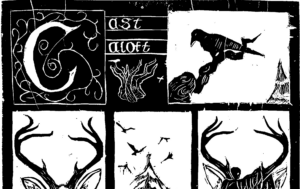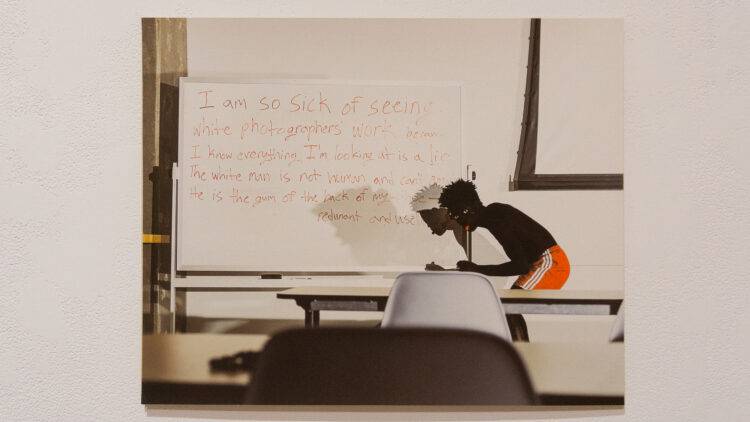
“I’m thinking of this as a discussion that needs to exist in this institution,” said Cenìnye Harris, touring a small group around his solo exhibition.
Hosted at the School of the Art Institute of Chicago’s student-run SITE gallery in the Leroy Neiman Center is Cenìnye Harris’ “Here: A New Discover.” Filling the entirety of the gallery for all of Black History Month, Harris’ self portrait photo series commands space and audience in a primarily white institution.
“Here: A New Discovery” identified by Harris as “Self Portraits as an American Optimist” is simple, a collection of portraits calling for confrontation from the viewers the same way the caricature confronts the young boy. Understanding the image is the first required step before protesting the system around it.
Using lighting and editing techniques, Harris isolates his figure in the portraits, creating an eerie Black body mimicking the dehumanizing image cast onto Black Americans over centuries in the United States.
“This black is fictional — a stereotype you have as a fantasy,” said Harris.
The caricature of Blackness that encapsulates many negative stereotypes of Black Americans is what needs to be challenged — protested. A type of protest Harris has made constantly throughout his life and time at SAIC.
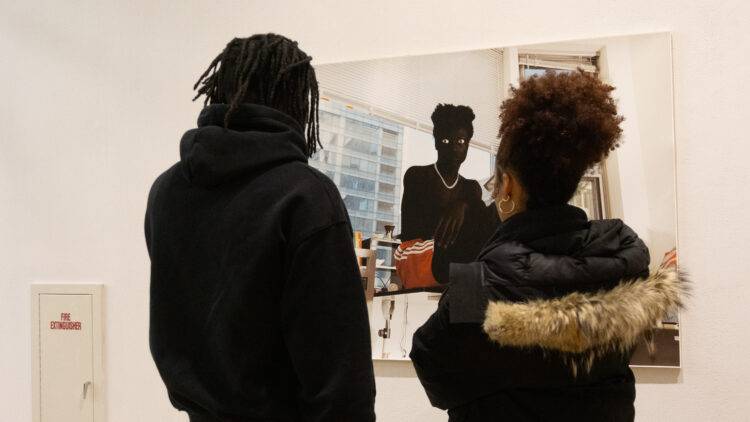
Harris’ intentions with “Here: A New Discovery” are nourished by his enthusiasm to discuss his work. During the exhibition’s opening, Harris candidly walked multiple viewers around the gallery providing explanations for various portraits. Alongside his candor, Harris hosted an informal panel discussion on Feb.18 with Annikah Godard, Lali Khalid, Nathan Miller, and Sonja Thomsento to dive deeper into the show’s themes. For those unable to hear the resources for themselves, Harris selected three books from the Flaxman Library: “Baldwin: Collected Essays” by James Baldwin, “And Still I Rise” by Maya Angelou, and “The Collected Poems of Audre Lorde” by Audre Lorde to continue the conversation and contextualize the work.
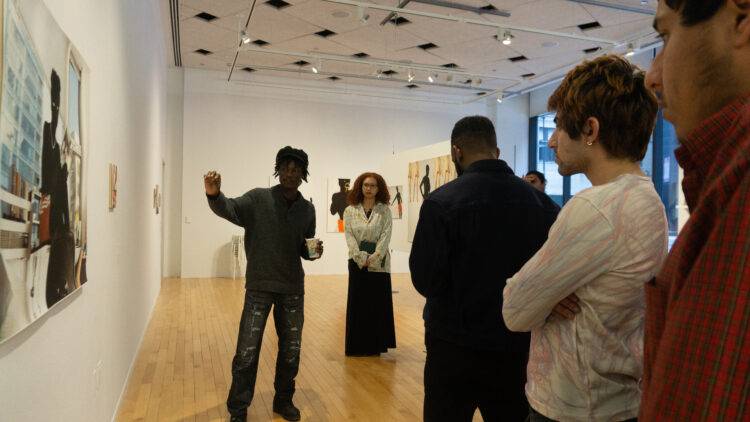
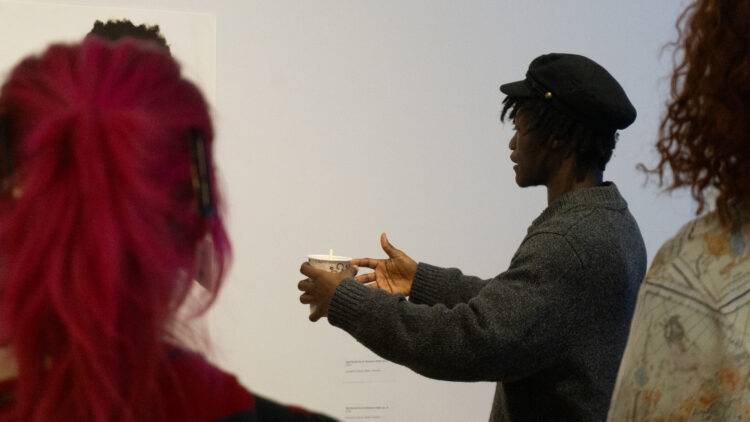
“Here: A New Discovery” directly challenges the institution. Multiple of Harris’ featured portraits were taken around campus at SAIC. One in particular, “Self Portrait as an American Professor,” 2024, directly points to Harris’ photography education derived at SAIC, positioned in one of the very rooms where the ideology is taught. While Harris can account for negative experiences within the University’s walls, “Here: A New Discovery” also analyzes the capital “I” Institution.
“Self Portrait as an American Proprietor,” 2024, sits in reference to the long history of lynching Black Americans by displaying white bodies in similar fashion with the same misguided appeal as Black bodies. Beside it is “Self Portrait as an American Athlete” 2024, the two portraits paint a reversed “then and now” picture.
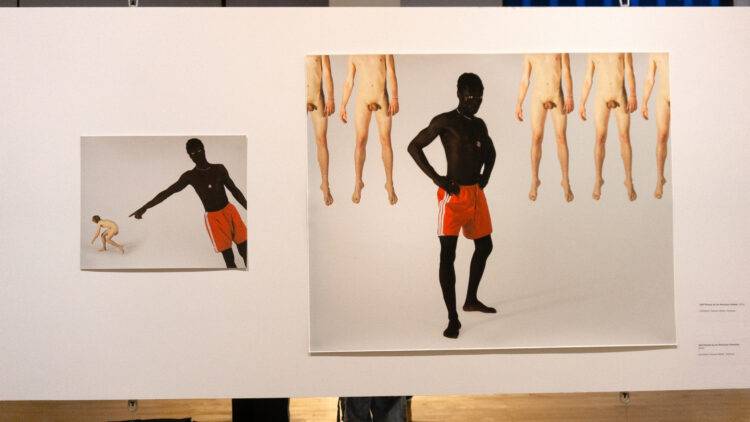
“[The show is] also a critique of the art world, the profit off of trauma, but specifically Black trauma, and you can’t divorce Black trauma from any conversation of art in general,” said Harris.
Realizing that the stereotype is a barrier to entry for understanding the need for change is why acknowledging Black history is so important. The bodily nudity in both portraits is directly connected to the fraught past of Black American life.
These two portraits, with the additional context from being presented in SAIC, was a jumping off point for more institutional critique from panelist moderator Annikah Godard. Some work given the most attention at the school — through marketing, space and academics — ignores aspects that Harris and Godard find pivotal to the discussion.
“Which is why the Barbara DeGenevieve show, I have an issue with. Because how are you going to take black trauma out of that [“The Panhandler Project”] conversation?” said Godard.
Such a large part of the ‘Here: A New Discovery’ is about violence. Not violence from Harris, but the violence of the image. All of the dark figures stand parallel to reality — the real people bearing an optimism that exists outside of the violence. An innocence that can persevere.
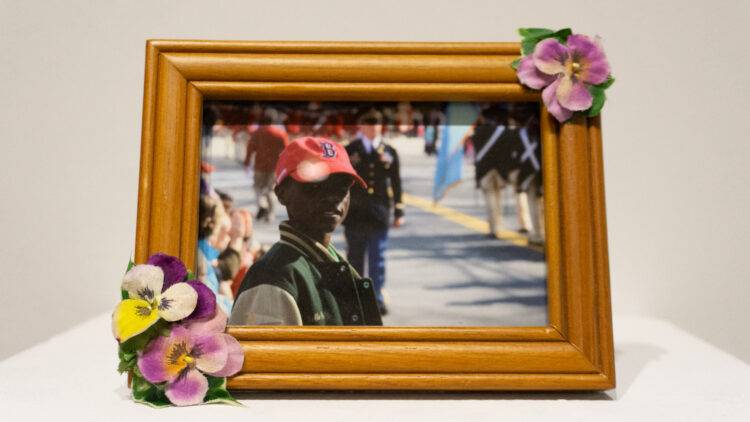
“Self Portraits as an American Optimist” and more of Harris’ work can be found at ceninye.com.




